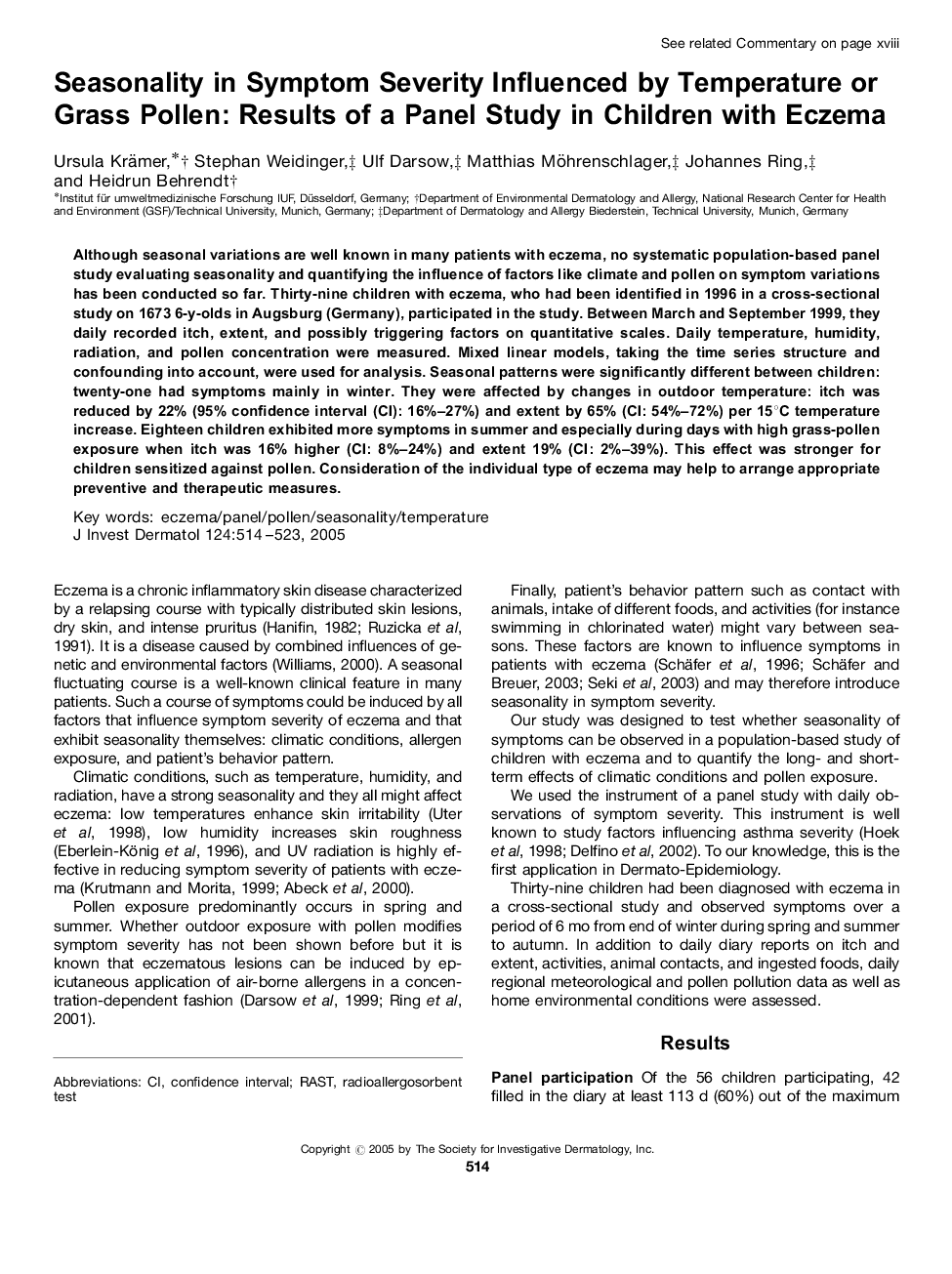| Article ID | Journal | Published Year | Pages | File Type |
|---|---|---|---|---|
| 9230306 | Journal of Investigative Dermatology | 2005 | 10 Pages |
Abstract
Although seasonal variations are well known in many patients with eczema, no systematic population-based panel study evaluating seasonality and quantifying the influence of factors like climate and pollen on symptom variations has been conducted so far. Thirty-nine children with eczema, who had been identified in 1996 in a cross-sectional study on 1673 6-y-olds in Augsburg (Germany), participated in the study. Between March and September 1999, they daily recorded itch, extent, and possibly triggering factors on quantitative scales. Daily temperature, humidity, radiation, and pollen concentration were measured. Mixed linear models, taking the time series structure and confounding into account, were used for analysis. Seasonal patterns were significantly different between children: twenty-one had symptoms mainly in winter. They were affected by changes in outdoor temperature: itch was reduced by 22% (95% confidence interval (CI): 16%-27%) and extent by 65% (CI: 54%-72%) per 15°C temperature increase. Eighteen children exhibited more symptoms in summer and especially during days with high grass-pollen exposure when itch was 16% higher (CI: 8%-24%) and extent 19% (CI: 2%-39%). This effect was stronger for children sensitized against pollen. Consideration of the individual type of eczema may help to arrange appropriate preventive and therapeutic measures.
Related Topics
Health Sciences
Medicine and Dentistry
Dermatology
Authors
Ursula Krämer, Stephan Weidinger, Ulf Darsow, Matthias Möhrenschlager, Johannes Ring, Heidrun Behrendt,
